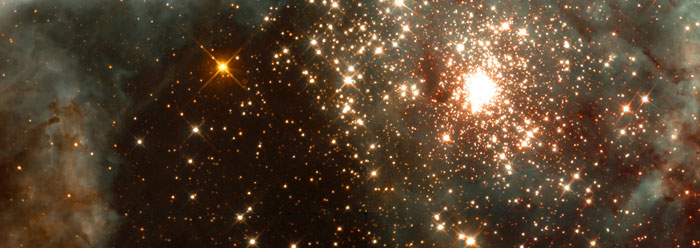After the initial interest waned, however, the find was largely forgotten. Now another planet is at the media forefront as the latest hope for life beyond earth.
Astronomers using NASA's $600-million Kepler telescope—launched in 2009—examined "2,326 potential planets in its first 16 months of operation."2 Of those, Reuters reported that the researchers confirmed that "10 are roughly Earth-size and reside in their host stars' habitable zones."3 One is named Kepler-22b, and its radius is about 2.4 times that of earth.
"If Kepler-22b has a surface and a cushion of atmosphere similar to Earth's, it would be about 72 degrees Fahrenheit," according to Reuters.3 And if the planet has a rocky surface, rather than gas like most extrasolar planets, then it might hold liquid water near the surface.
But even if this were verified, which is not currently possible, liquid water would be only one of hundreds of conditions required for life.4 Given enough outer space objects to investigate, it makes sense that at least some of them would inhabit the habitable zone. So, why all the excitement over this particular planet?
The answer is the possibility of "intelligent aliens."2
Funding from the U.S. Air Force recently put the Search for Extraterrestrial Intelligence (SETI) program back in operation. Now, SETI will focus its Allen Telescope Array on NASA's Kepler discoveries. SETI director Jill Tarter told Reuters, "As soon as we find a different, a separate, an independent example of life somewhere else, we're going to know that it's ubiquitous throughout the universe."3
And that would essentially vindicate evolution and nullify creation.5 This is because the Bible describes only the earth as being habitable: "For thus saith the LORD that created the heavens; God himself that formed the earth and made it; he hath established it, he created it not in vain, he formed it to be inhabited: I am the LORD; and there is none else."6
Extraterrestrial life would also contradict the Bible's claim that "Christ died once for all" to pay for the sins of humanity (Hebrews 10:10), since to be fair, He would have to die as many times as there are planets inhabited with intelligent life.7
If the Bible is right, there should be no life that originated in outer space. If, instead, naturalistic theories are correct, then life should also have evolved elsewhere in the universe.8 So far, nobody is out there, and Kepler-22b looks just like one of "the worlds [that] were framed by the word of God."9
References
- Thomas, B. 2010. Doubts Raised about the "Goldilocks" Planet. Acts & Facts. 39 (12): 17.
- Wall, M. NASA Telescope Confirms Alien Planet in Habitable Zone. Space.com. Posted on space.com December 5, 2011, accessed December 7, 2011.
- Klotz, I. Planet found orbiting habitable zone of sun-like star. Reuters, December 5, 2011.
- Thomas, B. Newfound Planet Is '100 Percent' Sure to Have Life? ICR News. Posted on icr.org October 12, 2010, accessed December 7, 2011.
- Thomas, B. SETI Funding Linked to Belief in Evolution. ICR News. Posted on icr.org May 9, 2011, accessed December 7, 2011.
- Isaiah 45:18.
- Lisle, J. Are ETs & UFOs Real? The New Answers Book. Posted on answersingenesis.org December 6, 2007, accessed December 7, 2011.
- This is called the "Fermi Paradox." UFO researcher Gary Bates wrote, "In 1950, Nobel Prize winner and pioneer of atomic energy Enrico Fermi, while working at Los Alamos nuclear facility in New Mexico, raised this straightforward question: 'Are we the only technologically advanced civilization in the universe, and if we are not, then where are they? Why haven't we seen any traces of extraterrestrial life such as probes or transmissions?'" Bates, G. 2010. Alien Intrusion: UFOs and the Evolution Connection. Powder Springs, GA: Creation Book Publishers, 79.
- Hebrews 11:3.
Image credit: NASA
* Mr. Thomas is Science Writer at the Institute for Creation Research.
